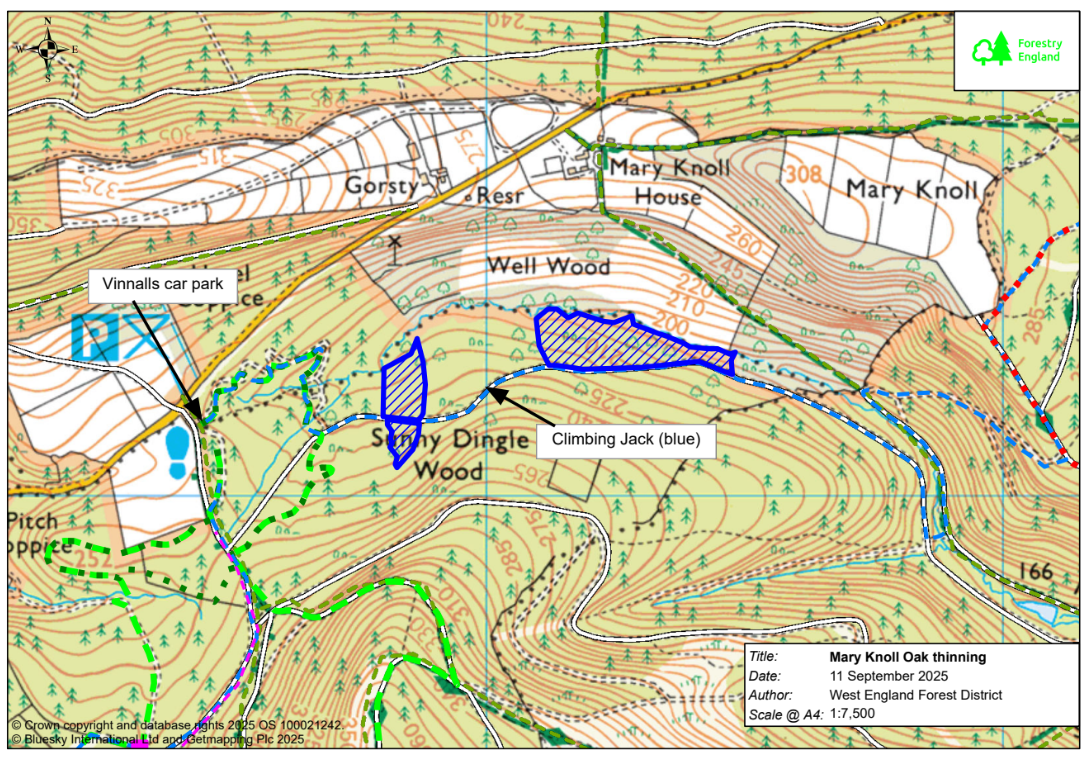Forestry operations at Mortimer Forest
Mortimer Forest is a working woodland producing sustainable timber. We are currently working between Mary Knoll Valley and Sunny Dingle.
Stay safe
Please follow all safety signage, closure information, diversions and instructions from operators. Please look out for moving vehicles and follow any instructions from the driver. Do not climb on stacked timber. A log can weigh up to a tonne and rolling logs can kill. Stacks are carefully made and may look stable but, if a log comes loose, others are likely to follow.
What is happening?
We are thinning oak trees between Mary Knoll Valley and Sunny Dingle. This means removing selected trees for timber products. This gives the remaining trees more space and light to grow to their full potential. Thinning also lets more light onto the forest floor, which improves the habitat for ground flora and the wildlife it supports.
While contractors and machinery are on site, we are taking the opportunity to remove ash trees infected with Chalara ash dieback in the same area.
We expect contractors to be on site from mid-September, with work likely to continue for several weeks.
Once harvesting is complete and all the timber has been removed from site, we will assess the condition of the forest roads, waymarked trails and Public Rights of Way and arrange for any necessary reinstatement work.
Can I still visit Mortimer Forest?
The forest road and Climbing Jack Trail will be closed between Mary Knoll Valley and Sunny Dingle until felling is complete. This is to help contractors complete work as quickly and safely as possible.
Any unofficial tracks or trails identified that cross the harvesting areas will be closed for the duration of the work.
What about the wildlife?
Harvesting trees is an important part of sustainable forest management and well managed forests support more wildlife. Before we start any forestry work, we carry out thorough ecological surveys to check for species such as birds, mammals, rodents, invertebrates, flora, and fungi. This enables us to identify ecological constraints such as the presence of European Protected Species and Schedule 1 protected birds, which affect the time of year when certain operations can be carried out.
We consider our findings against complex factors including tree health, how the ground slopes, soil condition, and likely rainfall when planning forestry work. There isn’t a single, perfect time of year for forestry work. While working, we continue to check for wildlife and adapt, pause, or suspend work if necessary.
Where can I find out more?
You can read our full management plan for Mortimer Forest in the Mortimer Forest Plan. If you have any questions, you can contact us at westengland@forestryengland.uk

